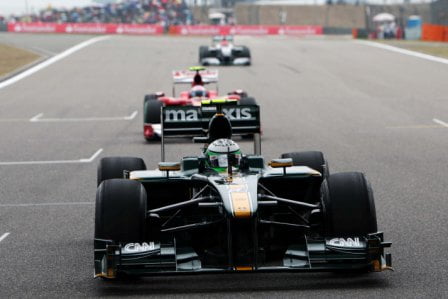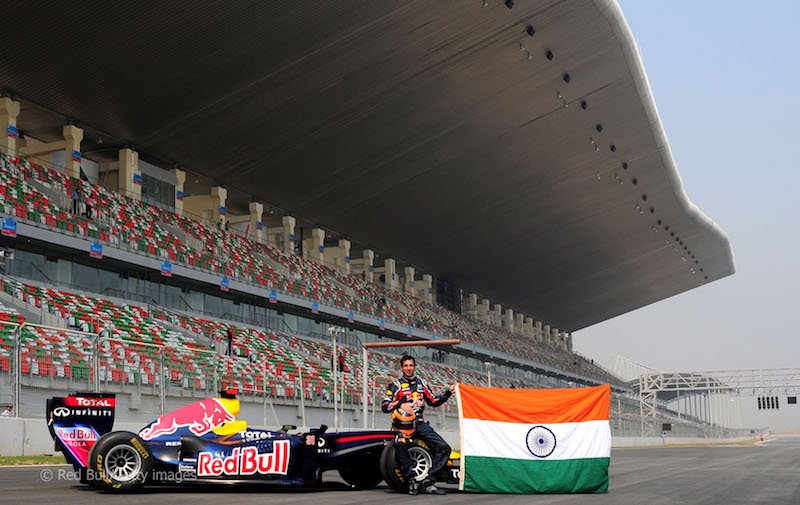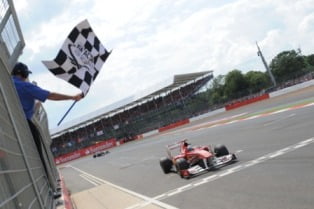I spent the weekend with the Sahara Force India drivers in Mumbai who were here to meet media and fans prior to the start of the 2012 Formula1 Season.
As always, I spent ample time talking to Paul di Resta and Nico Hulkenberg on the pre-season form of the team and a comparison with the others. We also discussed the team’s preparations for the first few rounds of the new season and of course the return of Kimi Raikkonen which will see 6 World Champions on the grid in Melbourne for the 2012 Australian Grand Prix.
(Read posts: Kimi Raikkonen Makes A Comeback To Formula1 With Lotus F1 Team; Challenges Kimi Raikkonen And Lotus F1 Team For The 2012 Formula1 Season)
The most interesting part of my discussions with Nico was his mention of a possibility of a few Formula1 teams still blowing the floor with exhaust gases this year. As we already know, such a phenomena is banned by the regulations this season and hence the exhaust designs are more traditional.
I have also mentioned in my previous blog posts that one area where we will witness maximum innovation is in exhaust design which directly impacts the flow of the exhaust gases over the rear of the car and hence influences its aerodynamics. During the pre-season tests, a few teams and their bold designs already raised a few eyebrows in the Paddock. However, on further discussion with Nico, he explained his reasons to believe why a few teams would still be blowing their floor with exhaust gases.
Nico mentioned the ‘Coanda Effect’ and how a few teams have used that effectively to design and use a traditional exhaust design (with the vents facing upwards) and still blow their exhaust gases to the floor. The concept is most interesting and has possibly been experienced by most in real-life situations in the kitchen! You could watch this video to understand the Coanda effect better.
The FIA banned the reactive ride height system earlier this year and robbed Formula1 fans of a technical innovation in 2012, does this mean that the design wars will be focused only on the exhausts this season? (Read post: Did The FIA Rob Formula1 Of Its Technical Innovation Of 2012?)
I hope not!
If you found the ‘Coanda Effect’ and its use in Formula1 too complex for your understanding, you should read ‘Formula1 Needs Better Marketing As It Enters Newer Territories‘.
Hear the 2012 Formula1 Pre Season Podcast and know RJ Rishi Kapoor and my views on pre-season testing as a build up to the opening round of the 2012 season.
While the excitement for the new season is building up, do also read the positive developments in Indian Motorsport on my blog. While the i1 Super Series has been cancelled, we have Toyota launching the Toyota Etios Motor Racing Championship for Indian motorsport fans. And if you prefer some technical Formula1 content, do read ‘Did the FIA react correctly to the ride height system episode‘?














2 comments On Are Teams Still Using Exhaust Gases To Blow Their Floor?
Good mention of the possible use of the Coanda Effect this season. Although it’ll be easy for the FIA to spot such an application by any team, I’m not sure if it’ll be easy to declare it illegal. It’ll be interesting to see how this develops in the initial weeks of the season!
That video that you linked shows the Coanda effect in the second half. The first half though, with water, is not really the Coanda Effect. Its more to do with surface tension with water sticking to the spoon. The moment when the spoon is pulled to the water stream, due to the air in between getting displaced is the Coanda Effect. Once the spoon sticks to the water, surface tension takes over. For Coanda Effect to be achieved, you have to have a gas jet flow into a gas environment or a liquid jet to flow into a liquid environment.
The second half where air is blown over the back of the spoon is the correct demo of the effect. Aircraft wings have long incorporated this in design, especially jet propulsion craft.
True Ritesh. Though I doubt if the FIA can deem this illegal unless the regulations disallow the use of such an effect, which is actually impossible.